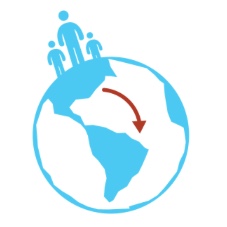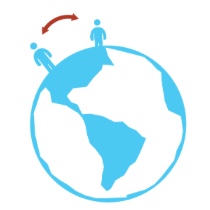Navigation auf uzh.ch
Navigation auf uzh.ch
We study how culture evolves in space and time, focusing on the evolution of language. We explore how languages spread, reconstruct past human interaction and reveal the influence of geography on cultural evolution.

Over the past 10,000 years, some language families have spread over enormous areas: Indo-European in Europe and Asia, Bantu in sub-Saharan Africa, Sino-Tibetan in Asia or Austronesian in Oceania. Phylogeography, a sophisticated statistical method, promises to reconstruct the spread of language families and find their homeland. But does phylogeography work?
Our recent publication shows that phylogeography fails to recover migration, where languages leave one place for another. However, it works well when languages gradually expand their territory, for example, to cultivate more crops and sustain a larger population.

When speakers of different languages interact, they are likely to exchange properties. The English word language, for example, was borrowed from French. We develop statistical tools to find traces of cultural contact in language evolution.
Recently, we published sBayes, a Bayesian spatial clustering algorithm to find hidden spatial clusters in space and identify areas of language contact.

Geography influences the distribution and the characteristics of languages. Spatially isolated languages, for example, tend to be more complex than centrally located languages with many neighbours.
In a recent publication, we identified a deep-time correlation between the genetics of a population and the grammar of their language, suggesting that grammar might be a cultural indicator of genetic history. Initially, we feared that the relationship might be an artefact of the influence of space, specifically the spatial neighbourhood of the populations. With the help of spatial statistics, we could show that spatial interaction fails to explain the correlation, confirming that the relationship between grammar and genes goes way back in time
Further information
The Spatial Data Science Group
Group leader
Dr. Peter Ranacher
Group members
Dr. Nico Neureiter
Dr. Takuya Takahashi
Dr. Nour Efrat-Kowalsky
Belongs to the organizational unit
Geographic Information Systems